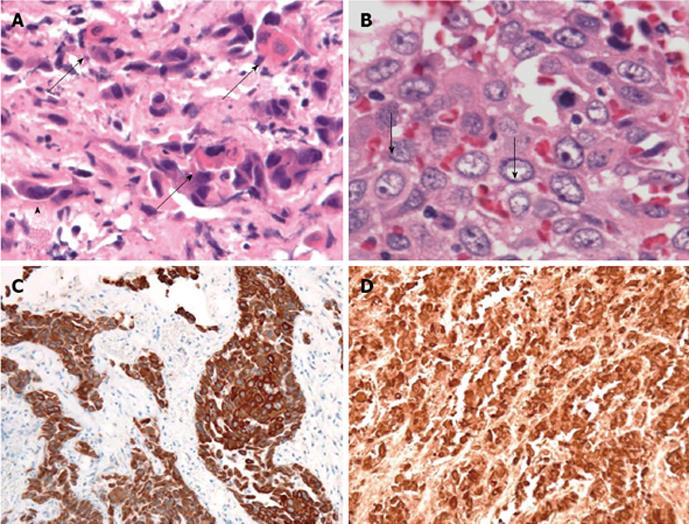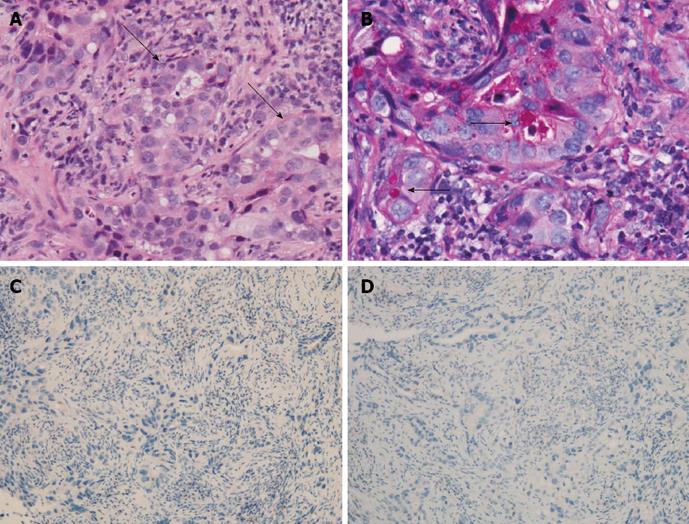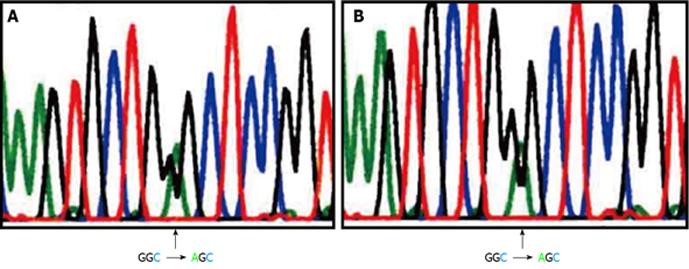Copyright
©2013 Baishideng Publishing Group Co.
World J Respirol. Jul 28, 2013; 3(2): 38-43
Published online Jul 28, 2013. doi: 10.5320/wjr.v3.i2.38
Published online Jul 28, 2013. doi: 10.5320/wjr.v3.i2.38
Figure 1 Images of the patient on admission.
A: An X-ray of the left femur showed an osteolytic change (arrow); B: Chest X-ray showed a tumor shadow; C: Chest computed tomography showed a 4-cm tumor, which was considered to be the primary lesion.
Figure 2 Histology of squamous cell carcinoma in the femur tumor.
A: Single cell keratosis (arrows); tadpole cells (arrowhead; HE staining, × 40); B: Intercellular bridges (arrows; HE staining, × 40); C: Cytokeratin 5/6 immunostaining (× 4) (monoclonal mouse anti-human cytokeratin 5/6 antibody from clone D5/16 B4; DakoCytomation, Copenhagen, Denmark); D: p63 immunostaining (× 4) (Monoclonal mouse anti-human p63 antibody from Clone 4A4; Nichirei Biosciences Inc., Tokyo, Japan).
Figure 3 Histology of adenocarcinoma in the lung tumor.
A: Glandular formations (arrows; HE staining × 40); B: D-periodic acid–Schiff suggests mucin production (arrows; × 40); C: Cytokeratin 5/6 immunostaining (× 4); D: p63 immunostaining (× 4).
Figure 4 Sequencing of epidermal growth factor receptor showing G719S in both the lung and femur samples.
A: Tumor of the lung; B: Tumor of the femur. Nucleotides: Green; A: Black; G: Blue; C: Red.
-
Citation: Kanaji N, Bandoh S, Hayashi T, Haba R, Watanabe N, Ishii T, Kunitomo A, Takahama T, Tadokoro A, Imataki O, Dobashi H, Matsunaga T.
EGFR mutation identifies distant squamous cell carcinoma as metastasis from lung adenocarcinoma. World J Respirol 2013; 3(2): 38-43 - URL: https://www.wjgnet.com/2218-6255/full/v3/i2/38.htm
- DOI: https://dx.doi.org/10.5320/wjr.v3.i2.38












